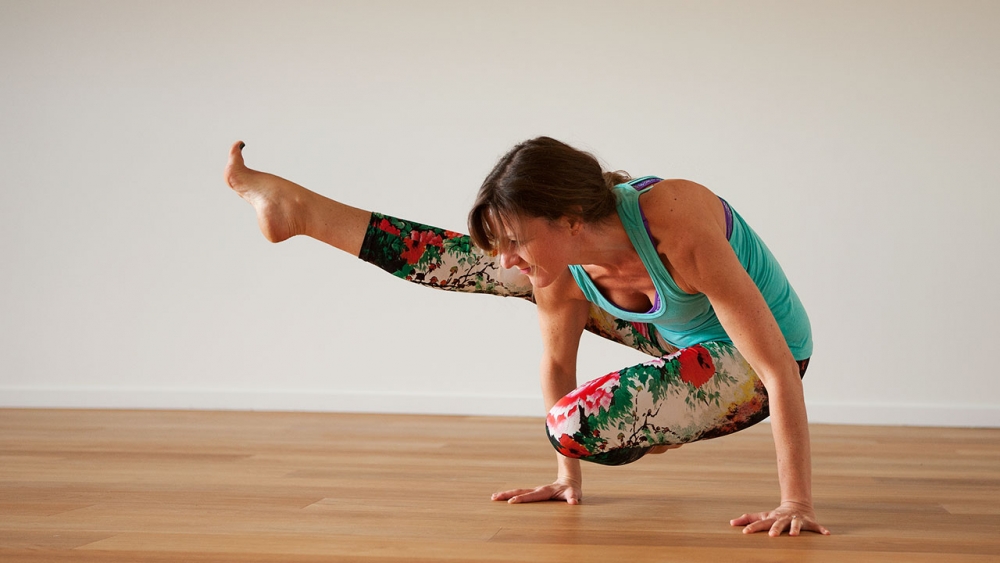Mind-body connection
The mind influences the body: we all experience this. For example, when you think about something you’re afraid of, your body will react and you feel all sorts of things: a heartbeat that is all over the place, heat, sweating etc. If you think about a particularly nice food, you get a physical reaction too – your mouth might water. When you’re nervous about something you may feel butterflies in your stomach.
Our body’s reactions are so strong that at times that we might wish it would react a little less. How great it would be if we could think about a presentation we have to give and the body just stayed perfectly calm!
Looking at it from that perspective, we can use yoga or other kinds of therapy to reduce the influence of the mind on the body. We can learn to turn the senses inward; this is known as Pratyahara. In meditation we learn to quietly watch the mind, which results in the mind becoming quieter, this is called Dhyana in yoga.
We give less attention to the mind, and the thoughts the mind produces. When we really learn to just observe and not to believe all the stories the mind creates, then we may notice the body will become calmer as a result. The effects of the mind on the body will lessen.
Even when the body still reacts (I like to call it body chemistry) we can also learn to observe that and let it pass, so it is there, but the influence it has on our system will not be as strong.
“Just as a tortoise withdraws its limbs, so when a man withdraws his senses from the sense objects, his wisdom becomes steady” ~ Bhagavad Gita
Using the mind-body connection in a positive way
Visualization
Taking the same example of a presentation, you can, in a relaxed place at home, close your eyes and imagine. Visualize yourself going through the presentation as if it is happening right now in the present tense and you are doing a brilliant job. Really see yourself just before the presentation, starting it, how you feel, what you see, smell, hear, using all the senses, giving the presentation the way you want to do it, feeling calm and confident etc.
Do this a few times – usually three times works very well. It feels as if the body has already done it – and chances are then that when you actually come to giving the presentation, it will go really well with fewer nervous sensations.
We can also use imagery to become familiar with certain poses in our yoga practice. Take handstand. If you have never done it before and you are afraid to try, it can be really helpful to imagine it first. Imagine what it feels like to be upside down, the alignment principles, imagine the steps leading up to it, jumping up, being in it, coming down etc.. I used this technique in this class – Handstand 4 Putting it all together.
Basically the body doesn’t know the difference between imagery and reality. It reacts the same way. Remember the famous quote from the Buddha that says “It’s the mind that creates the world”.
Enough research has been done in this area. One example is a famous pianist who injured his hand and couldn’t practice physically. For the duration of time that he was injured, the pianist visualised his practice as if he was doing it in real life. When he could perform again, after that period of practicing in his mind, he was actually better than ever. With mental rehearsal, minds and bodies become trained to actually perform the skill imagined.
The body influences the mind
The body influences the mind too. Don’t we almost always feel better after doing yoga? Or at least different? That’s because we change the body’s chemistry when we do yoga. We open areas where we hold tension and we encourage the prana/life energy to flow again. This helps us feel good and when we feel good the mind relaxes and we’re able to enjoy the moment more.
Different categories of yoga poses have different effects onthe mind. If you’ve practised yoga for a while you might have noticed that forward bends tend to calm the body and the mind, backward bending seems to stimulate the body and thus the mind, hip openers can bring up lots of emotions etc.
Think also of how taking a warm bath can help your mind to relax, or a massage. All ways that we can influence the mind through working with the body.
The body and mind are manifestations of the same thing
Think about it this way, there would be no body without a mind and there is no mind without the body. Sri Nisargadatta Maharaj’ in “I AM THAT” says:
“As body, you are in space. As mind, you are in time. But are you a mere body with a mind in it? Have you ever investigated?’ (252)
“Why not investigate the very idea of body? Does the mind appear in the body or the body in the mind? Surely there must be a mind to conceive the “I-am-the-body” idea. A body without a mind cannot be ‘my body’. ‘My body’ is invariably absent when the mind is in abeyance. It is also absent when the mind is deeply engaged in thoughts and feelings.” (434)
In the end there is no such thing as separation. Yoga is about unity and oneness. So if you want to move away from separation and towards oneness, contemplating what Nisargadatta says above is a great start.
With love,
Esther

